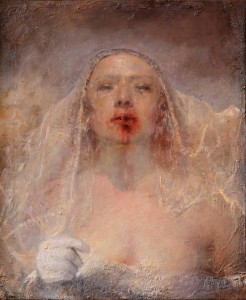KITSCH BIENNALE. Why “kitsch”?
Why “kitsch”?
The painters invited to exhibit at The Kitsch Biennale 2010 in Venice have been chosen from their ability to create life on canvas – an idea deeply rooted in European Humanism that presupposes insight into anatomy and human psychology, a mind for pathos and a sense for the archetypical narrative.
Yet, these values are rootless in contemporary art, which generally disregards skill and aims to reflect the time. They were not included in the modern concept of art (originally “fine art”), which was born about 250 years ago. Rejecting handcraft and sincerity, art represents a break with the values of the Renaissance and Baroque and not a continuation of them.
Because of this situation an alternative to art is needed, and The Kitsch Biennale seeks to present it. But why use the word “kitsch”?
The term is about 150 years old, and has commonly been used in a negative and disparaging sense. It denotes sentimentality and pathos in music, sculpture and painting.
From the 20th century on, ”kitsch” started to be used more theoretically and afterwards as the negative opposite of art. Painters who still wanted to make paint look like living skin, were considered old-fashioned and labelled with this term. According to Hermann Broch: «In art the evil is represented by kitsch». Thus, kitsch is not even ”bad art”, but forms a system of its own.
In 1996, however, Odd Nerdrum discovered the positive potential in the term. He started to claim “kitsch” as a positive superstructure for figurative, non-ironic and narrative painting to which the concept of “kitsch” fits better than “art”.
Consequently, a growing number of figurative painters are now calling themselves “kitsch painters”.
According to the positive view of kitsch:
• The eternal perspective is preferable to a contemporary, limited horizon.
• A “sentimental” or “pathetic” image is no cause of shame (unless badly painted…).
• Quality is more important than originality.



This Post Has 0 Comments